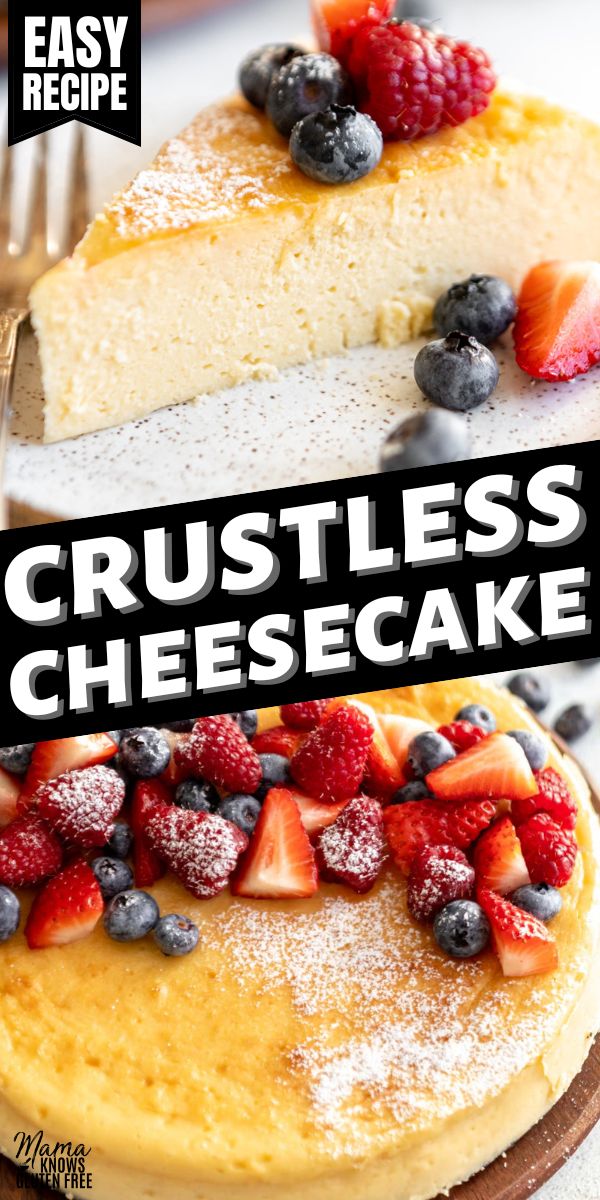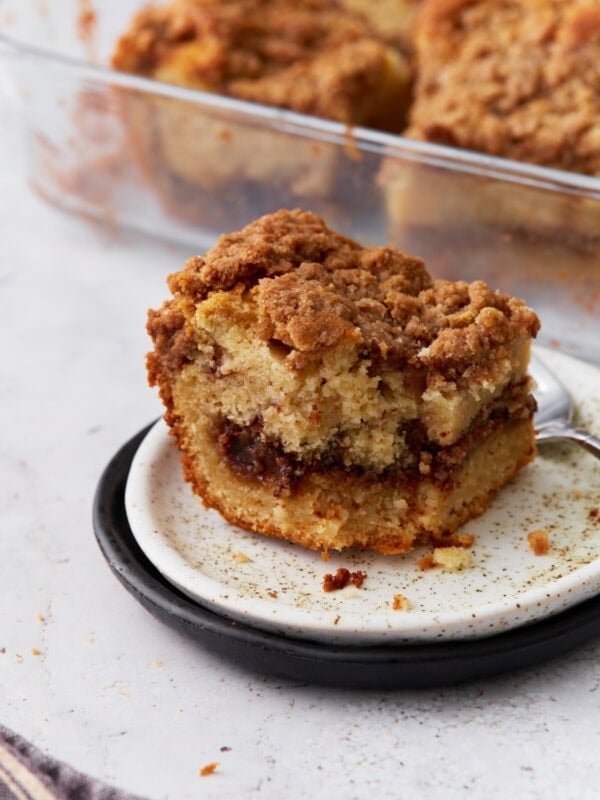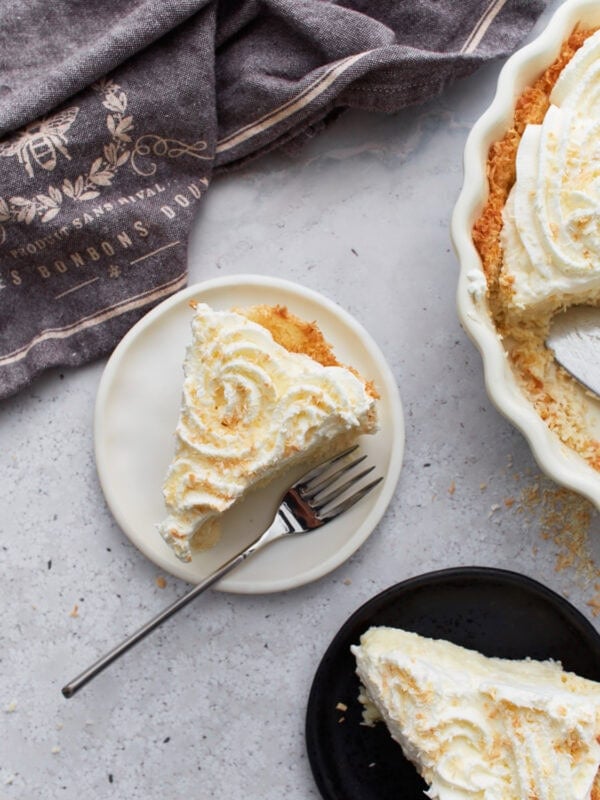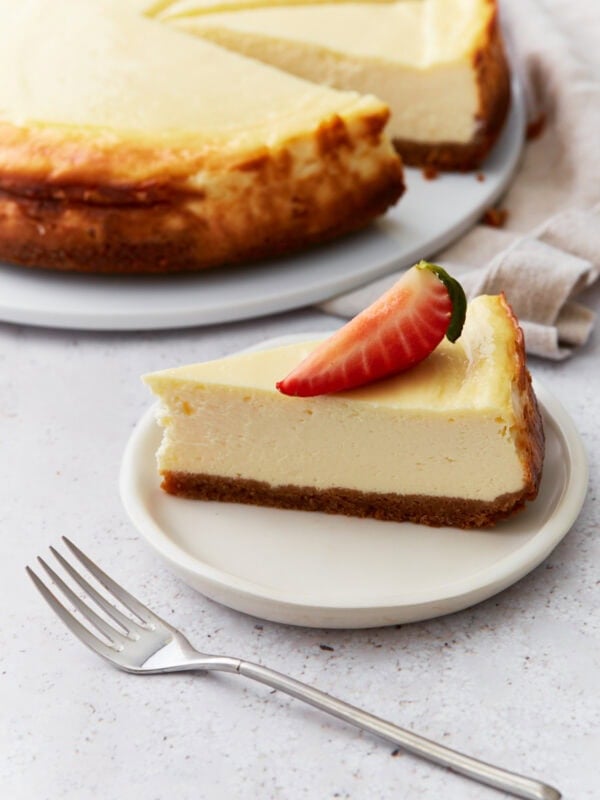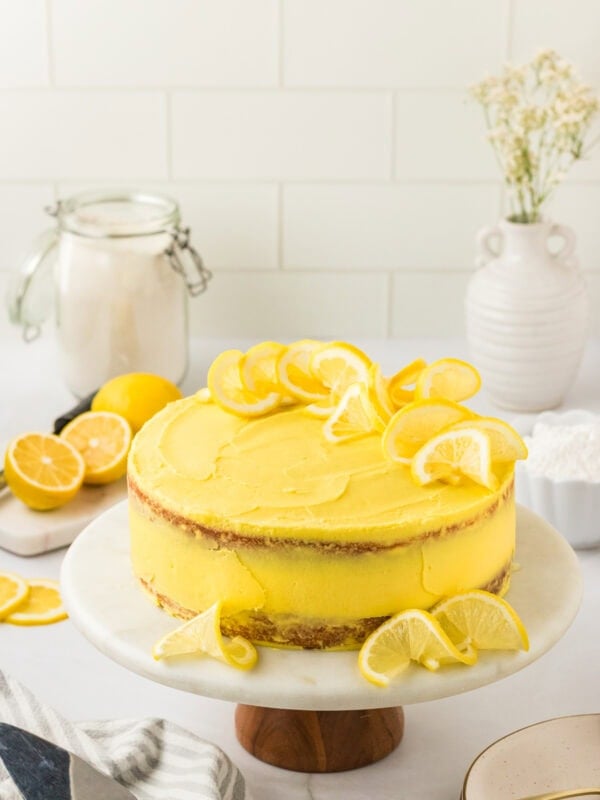Crustless Cheesecake
Published
An easy recipe for gluten-free crustless cheesecake. This crustless cheesecake recipe is rich, creamy, and tangy– plus, it’s naturally gluten-free!
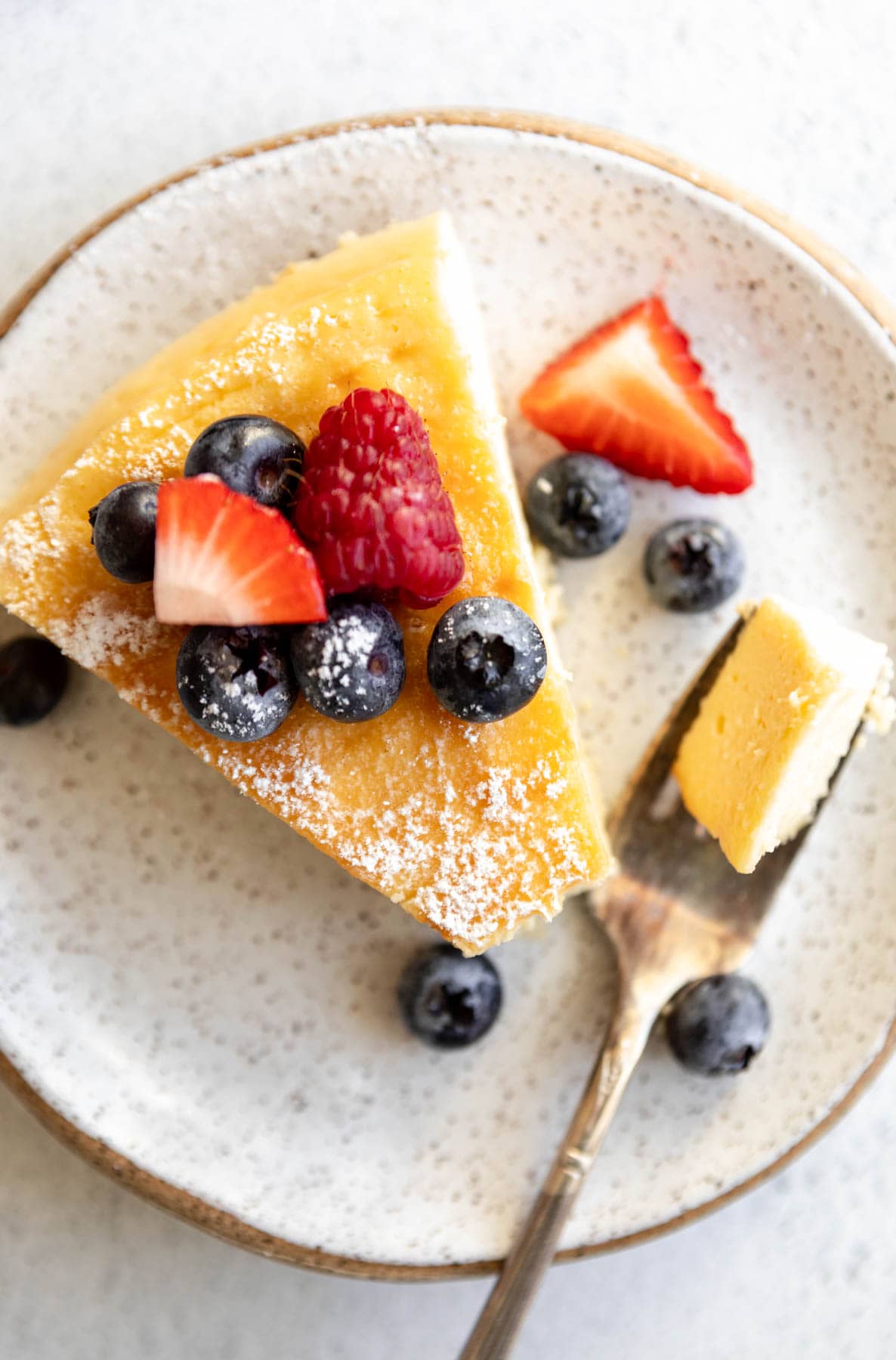
Crustless Cheesecake Recipe
This homemade crustless cheesecake is so simple to make. With just five ingredients and no crust, you can be assured that this cheesecake is creamy and rich without compromising on taste.
Most traditional cheesecakes have wheat flour in the crust. To top it off, it’s often added to the batter to help thicken it up and prevent cracking. In this recipe, we omit every last trace of flour by going crustless. And trust us, you won’t miss it!
We have created an easy-to-follow gluten-free crustless cheesecake recipe. Follow the detailed recipe technique notes and tips along with step-by-step photos to guide you to the best crustless cheesecake.
Ingredients
- Cream Cheese: Cream cheese is the main ingredient in every cheesecake so don’t skimp on quality here! You’ll want full-fat block-style cream cheese (not the spreadable kind you’d put on a bagel).
- Granulated Sugar: This sweetens the cheesecake and balances its tangy flavor.
- Sour Cream: Adds moisture and creaminess to the texture of the cheesecake.
- Eggs: Help hold the cheesecake together.
- Vanilla Extract: A dash of vanilla extract helps to bring all the flavors together.
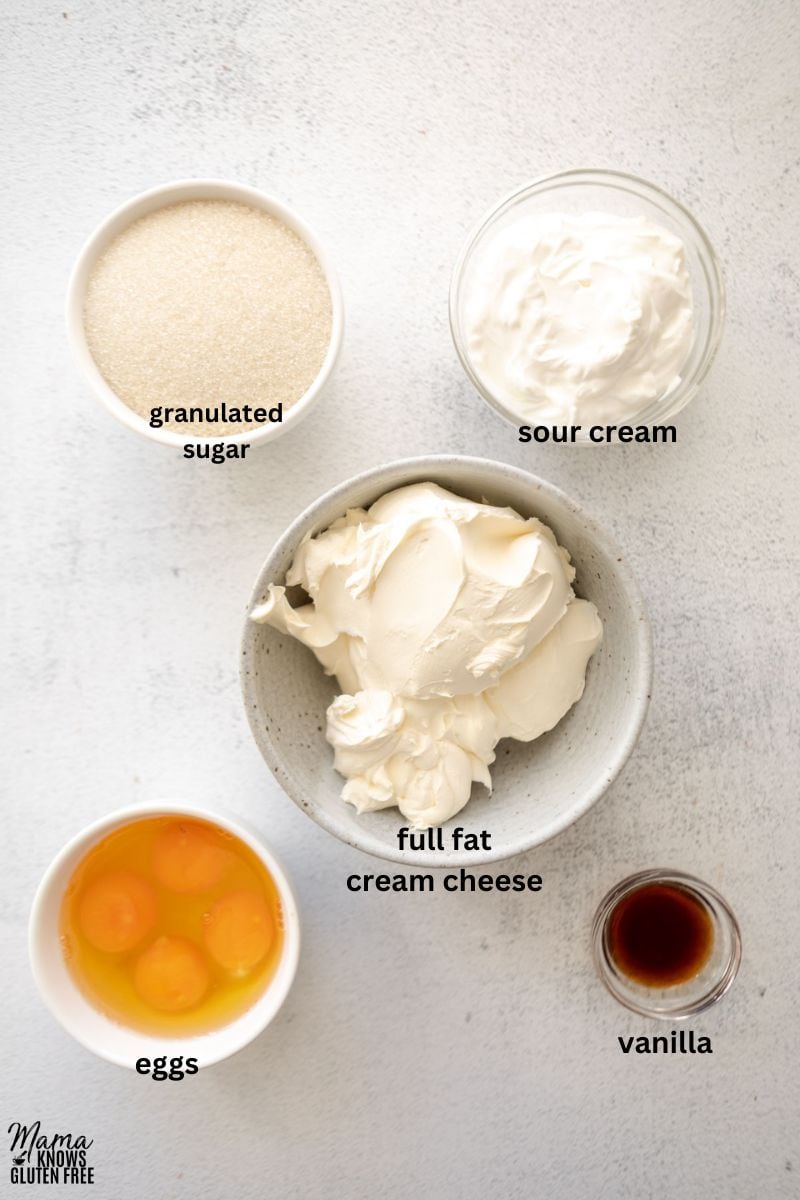
How to Make
- Preheat the oven to 325°F.
- Grease and line a 9-inch springform pan with parchment paper. Wrap the outside of the pan with parchment paper to ensure the bottom and sides are all tightly covered.
- In a large bowl, beat the cream cheese (on high) for 30 seconds. (pic 1)
- Add the sugar and vanilla and beat until blended well. (pic 2)
- Add in the sour cream and beat until smooth.
- Add eggs into the cream cheese mixture one at a time beating well (on low) after the addition of each egg. (pic 3)
- Pour the batter into the prepared pan and gently pat down the bottom a couple of times to remove any air bubbles. Add the pan to a larger pan filled halfway up with water. (pic 4)
- Bake for 75-90 minutes. (pic 5)
- Let cool at room temperature for 30 minutes, then set in the fridge to cool for at least 4 hours before slicing and serving chilled. Top with fresh fruit if desired. (pic 6)
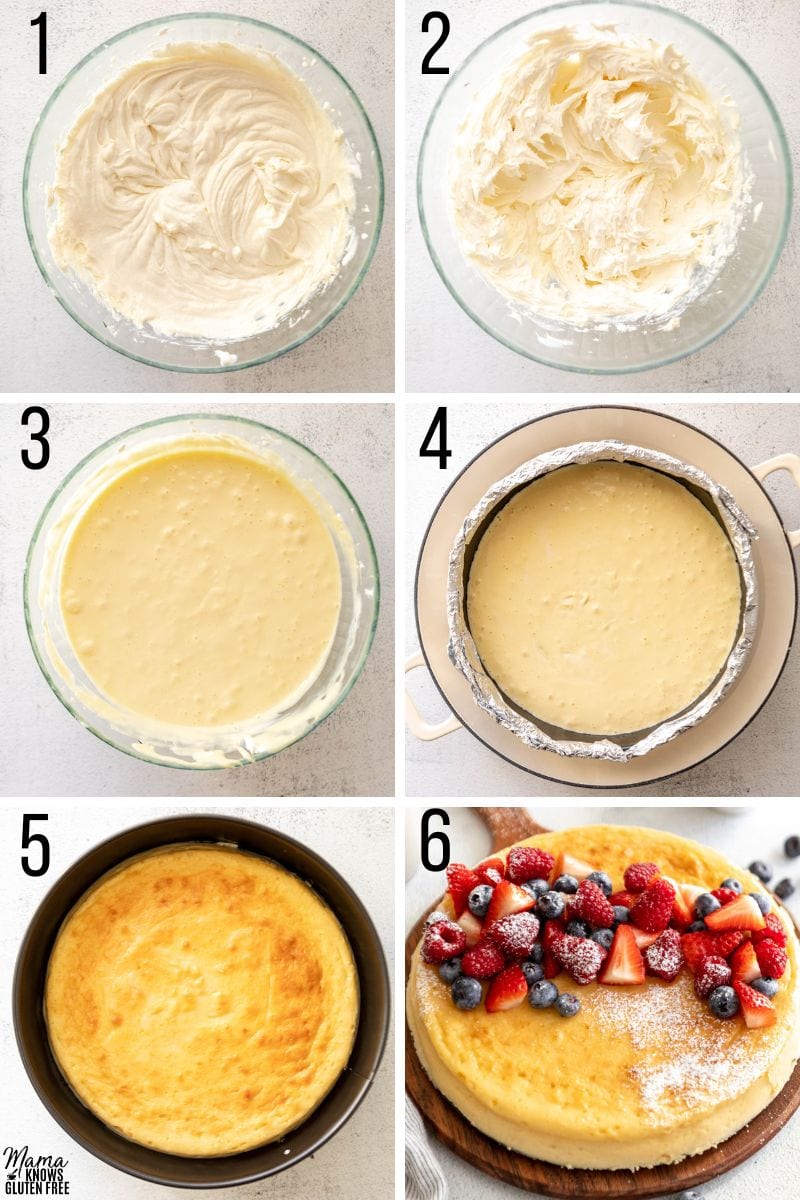
Tips and Suggestions
- Be sure to use quality ingredients. For a rich and creamy cheesecake don’t substitute full-fat cream cheese for low-fat cream cheese.
- Bring all refrigerated ingredients to room temperature before starting to make the cheesecake. Room-temperature ingredients combine together more smoothly. If you try to beat cold cream cheese, you’ll end up with large chunks of cream cheese in your cheesecake batter.
- Don’t over-mix the batter. Too much air in the batter can lead to cracks in the gluten-free cheesecake.
- Do not open the oven while the cheesecake is baking. This will cause rapid temperature loss, which can cause the cheesecake to crack.
- Do not overbake the cheesecake. Your crustless cheesecake is done baking once the edges look set and the middle 2-inch to 3-inch of your cheesecake is still slightly wobbly. The middle will continue to firm up after it’s removed from the oven. Overbaking a crustless cheesecake will cause cracks.
- Let the crustless cheesecake cool completely to room temperature before placing it in the refrigerator.
- Let your cheesecake chill in the refrigerator for at least 4 hours (or overnight) so it has the proper time to set before you try to cut it into slices. You need to give the crustless cheesecake the proper time to firm up and set up before slicing.
Keep in mind that sometimes, despite your best efforts, crustless cheesecakes will crack and that’s okay! This doesn’t affect the taste at all and you can easily cover it up with some toppings.
How Do You Keep A Crustless Cheesecake From Sticking To The Pan?
Grease the pan liberally with butter or non-stick spray to help prevent sticking. You can also line the pan with parchment paper if you prefer.
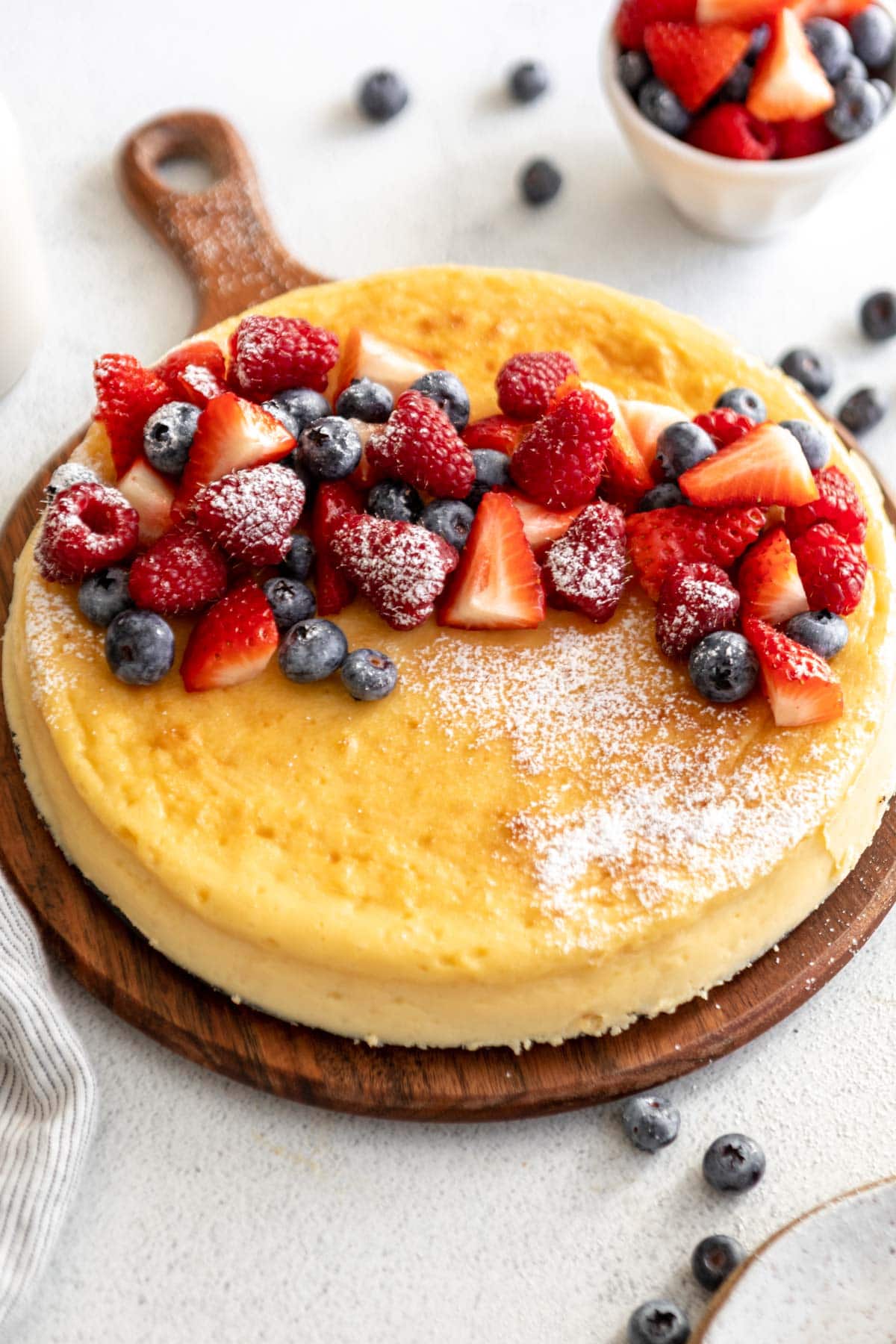
Removing cheesecake from a springform pan
Once the cheesecake has chilled completely, run a knife around the edges of the pan to help separate the cheesecake. Unclip the clamps on the pan, remove the sides, then use the knife to gently release the cheesecake from the base of the pan. Use a large spatula or pancake turner to lift the cheesecake out of the pan.
Topping Ideas
This crustless cheesecake is delicious just as it is, but many people like to serve cheesecake with extra toppings for added flavor. Some cheesecake topping ideas include:
- Gluten-free canned pie filling
- Fresh fruit like strawberries, blueberries, or raspberries
- Caramel sauce
- Chocolate or hot fudge sauce
- Whipped cream
How to Store
This crustless cheesecake can be stored in the refrigerator for up to 5 days. Be sure to store it in an air-tight container or wrap it well in plastic wrap so it doesn’t dry out. Wait to add any toppings until just before serving.
You can also freeze this crustless cheesecake cut into individual slices tightly wrapped in plastic wrap and then aluminum foil to keep out any moisture. Place the slices into a freezer bag to store for up to 2 months. Let thaw overnight in the refrigerator before enjoying chilled.
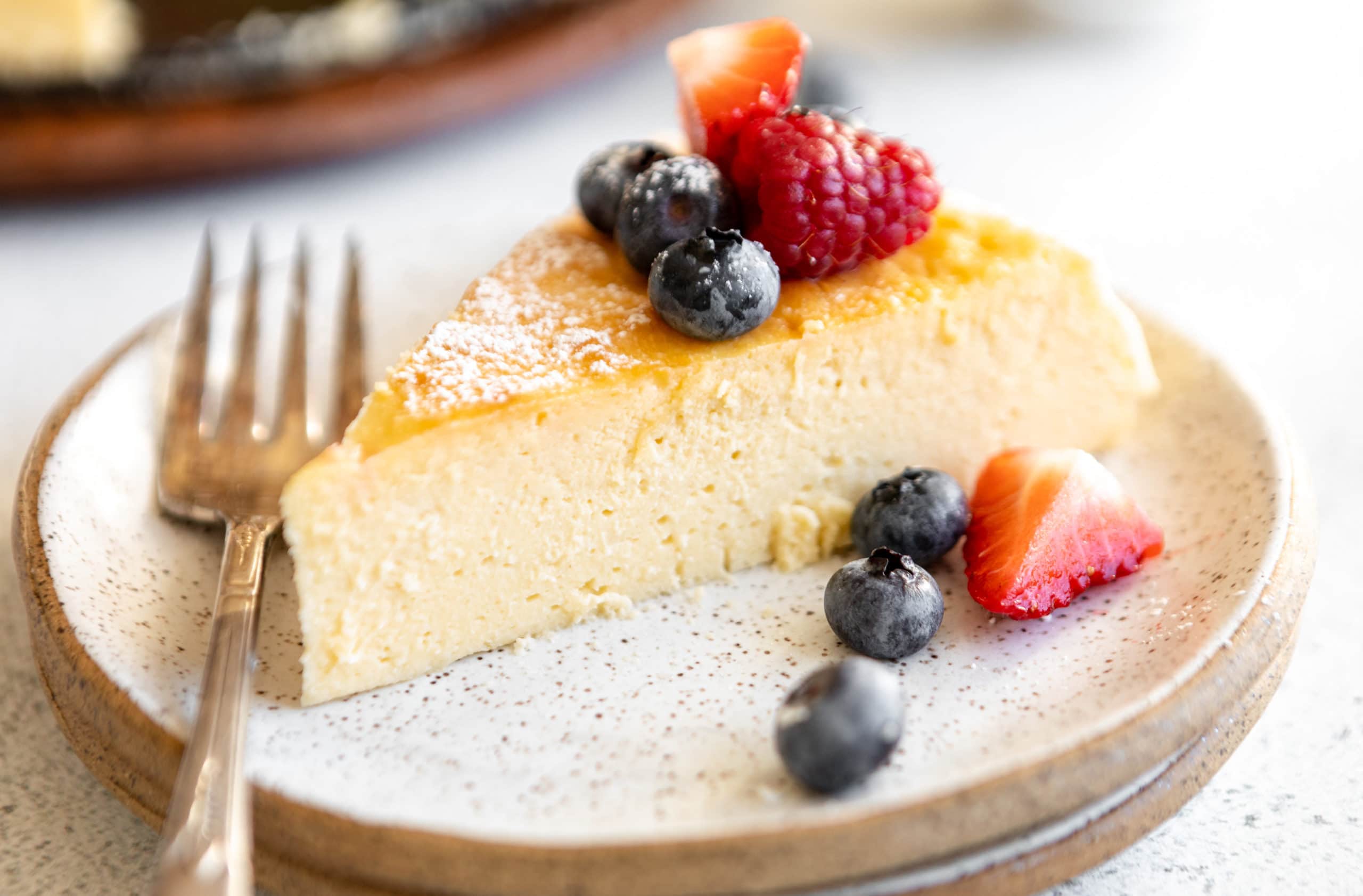
Skip all the worry by skipping the crust completely! This crustless cheesecake has all that great richness and tangy flavor of a classic cheesecake without the crust, allowing for more customization and less ingredient uncertainty. It’s so easy to make a gluten-free crustless cheesecake!
More Gluten-Free Dessert Recipes to Try!
- Gluten-Free Cheesecake
- Gluten-Free Mini Cheesecakes
- Gluten-Free Brownies
- Gluten-Free Strawberry Cake
Crustless Cheesecake Recipe
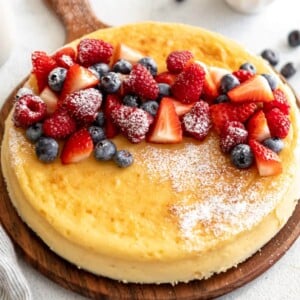
Ingredients
- 24 ounces full-fat cream cheese, softened to room temperature (block style, not spreadable cream cheese)
- 1 cup granulated sugar
- ¾ cup sour cream, room temperature
- 4 large eggs, room temperature
- 1 tablespoon pure vanilla extract
Instructions
- Preheat the oven to 325°F.
- Grease and line a 9-inch springform pan with parchment paper. Wrap the outside of the pan with parchment paper to ensure the bottom and sides are all tightly covered. Set aside.
- In a large bowl, beat the cream cheese (on high) for 30 seconds.
- Add the sugar and vanilla and beat until blended well.
- Add in the sour cream and beat until smooth.
- Add eggs into the cream cheese mixture one at a time beating well (on low) after the addition of each egg. Use a spatula to scrape down the sides of bowl. Do not overmix – beat just until combined.
- Pour the batter into the prepared pan and gently pat down the bottom a couple of times to remove any air bubbles.
- Add the pan to a larger pan filled halfway up with water and bake for 75-90 minutes. The cheesecake is done when the outside edges are set but the middle 2-inch to 3-inch of the gluten-free cheesecake is still slightly wobbly.
- Let cool at room temperature for 30 minutes, then set in the fridge to cool for at least 4 hours.
- Slice and serve chilled.
Notes
- Be sure to use quality ingredients. For a rich and creamy cheesecake don’t substitute full-fat cream cheese for low-fat cream cheese.
- Bring all refrigerated ingredients to room temperature before starting to make the cheesecake. Room-temperature ingredients combine together more smoothly. If you try to beat cold cream cheese, you’ll end up with large chunks of cream cheese in your cheesecake batter.
- Don’t over-mix the batter. Too much air in the batter can lead to cracks in the gluten-free cheesecake.
- Do not open the oven while the cheesecake is baking. This will cause rapid temperature loss, which can cause the cheesecake to crack.
- Do not overbake the cheesecake. Your crustless cheesecake is done baking once the edges look set and the middle 2-inch to 3-inch of your cheesecake is still slightly wobbly. The middle will continue to firm up after it’s removed from the oven. Overbaking a crustless cheesecake will cause cracks.
- Let the crustless cheesecake cool completely to room temperature before placing it in the refrigerator.
- Let your cheesecake chill in the refrigerator for at least 4 hours (or overnight) so it has the proper time to set before you try to cut it into slices. You need to give the crustless cheesecake the proper time to firm up and set up before slicing.
- To store: Store crustless cheesecake in an air-tight container in the refrigerator for up to 5 days.
- To freeze: Freeze individual slices of cheesecake wrapped in plastic wrap and aluminum foil in an air-tight plastic freezer bag for up to 2 months.
Nutrition
Nutrition information is automatically calculated, so should only be used as an approximation.
